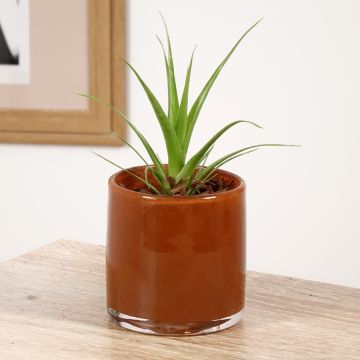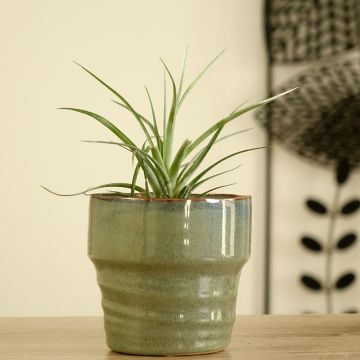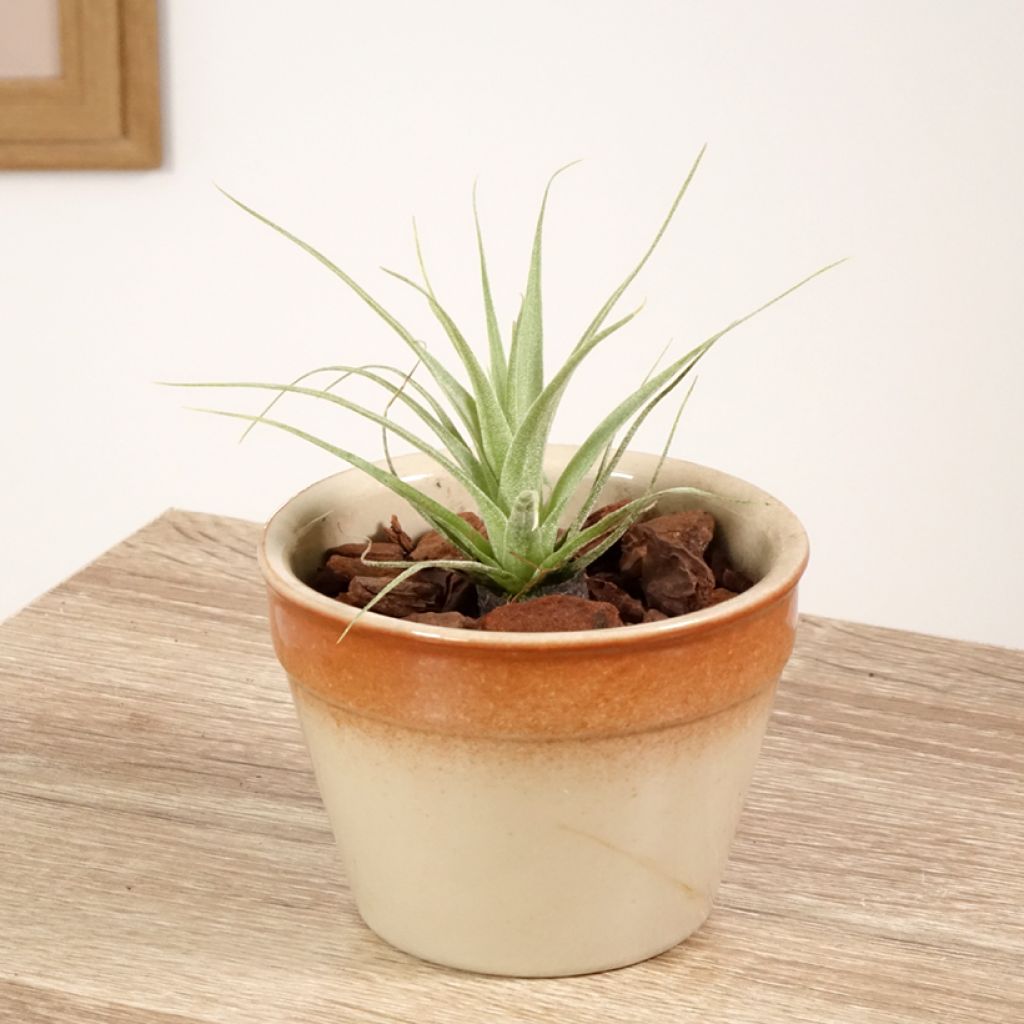

Tillandsia Samantha - Air plant
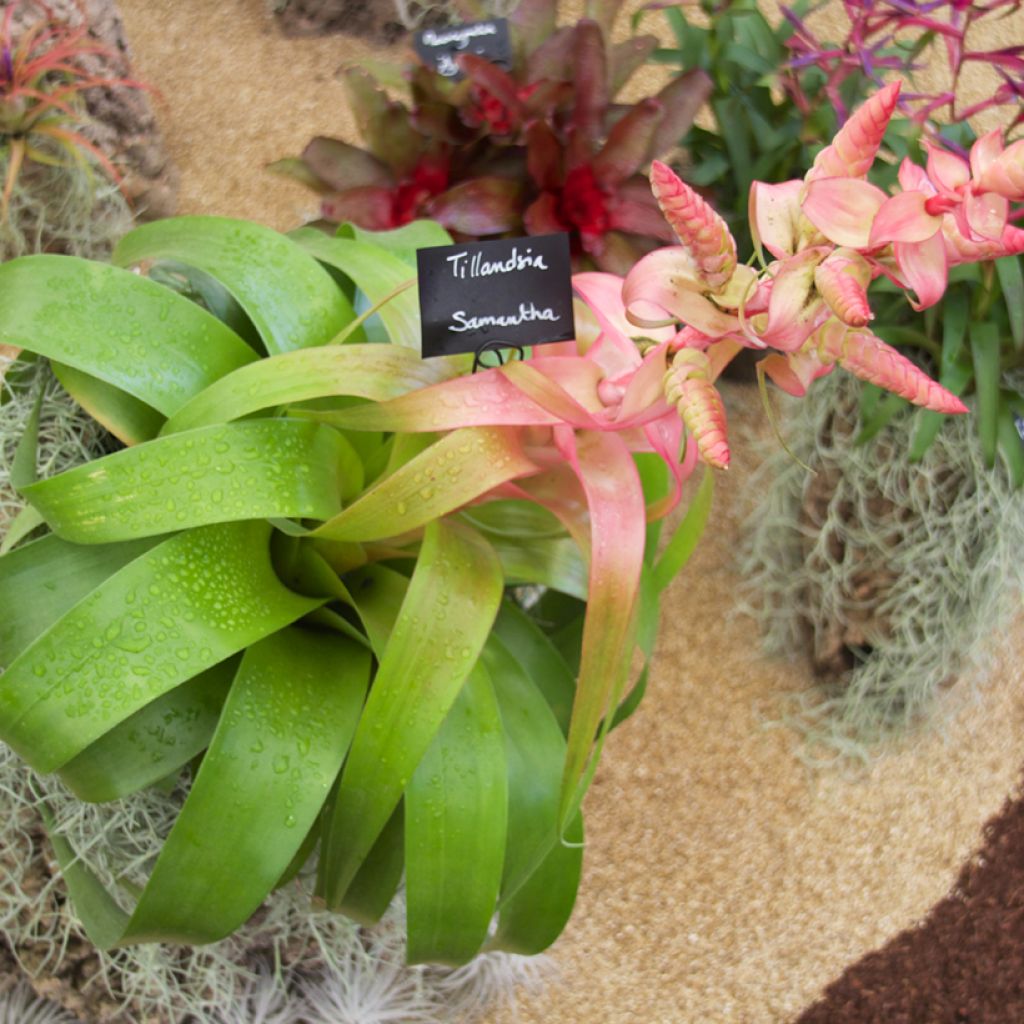

Tillandsia Samantha - Air plant
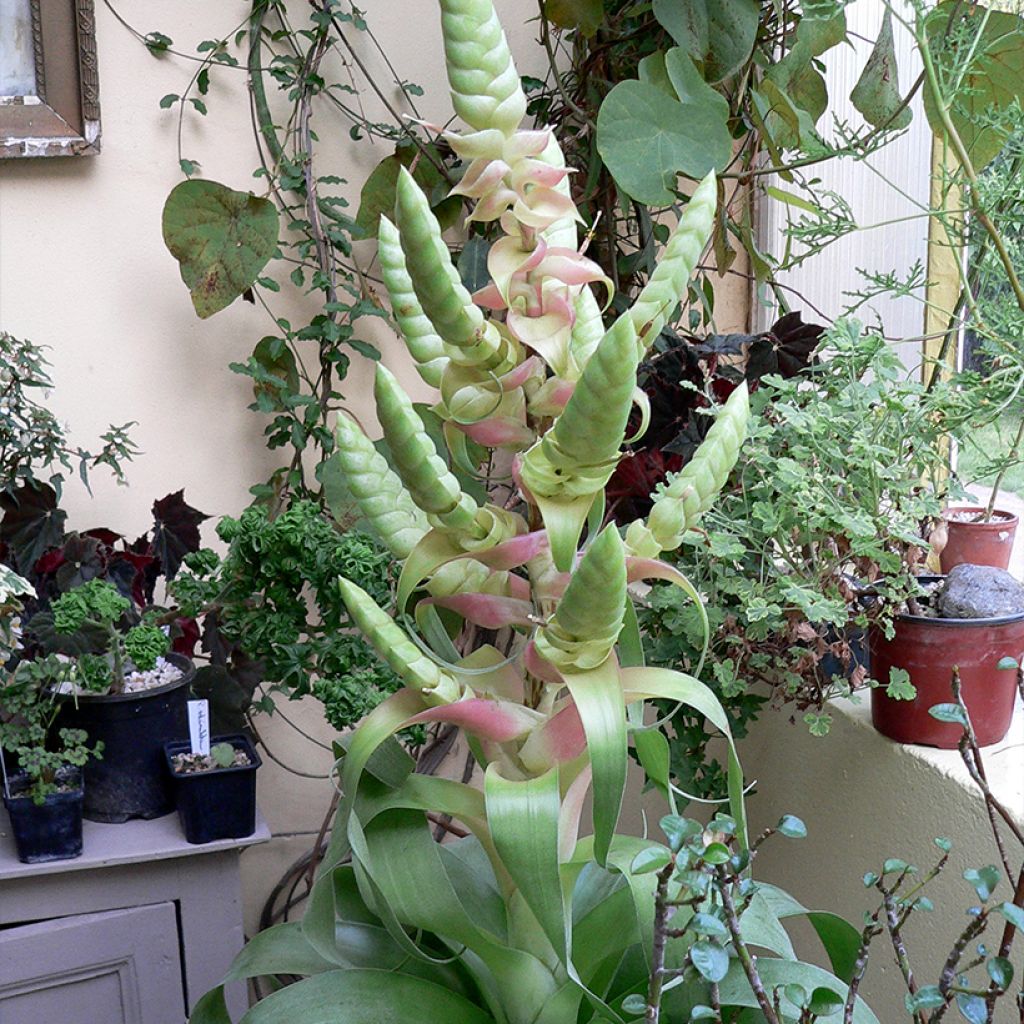

Tillandsia Samantha - Air plant
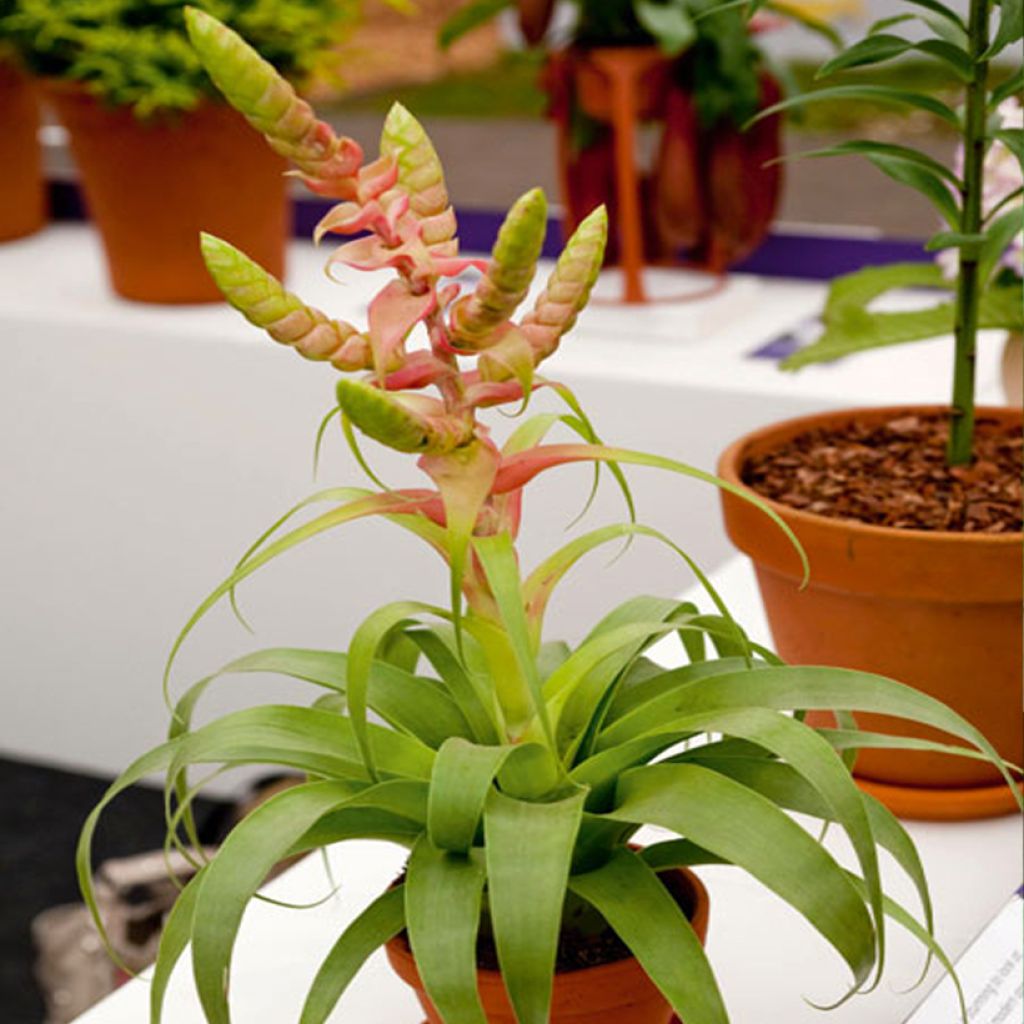

Tillandsia Samantha - Air plant
Tillandsia Samantha - Air plant
Tillandsia mooreana x kalmbacheri Samantha
Air plant
Special offer!
Receive a €20 voucher for any order over €90 (excluding delivery costs, credit notes, and plastic-free options)!
1- Add your favorite plants to your cart.
2- Once you have reached €90, confirm your order (you can even choose the delivery date!).
3- As soon as your order is shipped, you will receive an email containing your voucher code, valid for 3 months (90 days).
Your voucher is unique and can only be used once, for any order with a minimum value of €20, excluding delivery costs.
Can be combined with other current offers, non-divisible and non-refundable.
Why not try an alternative variety in stock?
View all →This plant carries a 30 days recovery warranty
More information
We guarantee the quality of our plants for a full growing cycle, and will replace at our expense any plant that fails to recover under normal climatic and planting conditions.
Description
Tillandsia 'Samantha', also known as the Air Plant, is a stunning houseplant that adds a touch of exotic flair to your decor. Its broad, long, light green, slightly curved leaves form a lush rosette, while its spectacular inflorescence can exceed one metre in height. Perfect for contemporary or tropical interiors, this epiphytic plant thrives without a pot, mounted on a decorative support such as a branch or piece of driftwood. Place it in a very bright spot, but away from direct sunlight, and ensure adequate ambient humidity by regularly misting its leaves with non-calcareous water.
Belonging to the Bromeliad family, Tillandsia 'Samantha' is a horticultural hybrid believed to result from the cross-breeding of two botanical species, Tillandsia mooreana and T. kalmbacheri. This epiphytic perennial has a slow growth rate, reaching a height of 45 to 55 cm (for the foliage) and a spread of up to 70 cm in diameter at maturity. Its numerous broad, flexible, light green leaves with a slightly greyish hue form a curved rosette. Water should be poured into the centre of this rosette. Avoid letting water stagnate in the centre at the start of flowering, to prevent drowning the inflorescence before it emerges from the rosette. Change the water in the centre every 2 or 3 days. The upright, imposing inflorescence consists of several spikes, each bearing around twenty tubular flowers nestled in reddish bracts at the base. This flowering, which occurs in spring or summer, only appears on mature plants under suitable growing conditions. A slightly cooler period during the year tends to encourage flowering.
The Tillandsia genus includes around 650 species of epiphytic plants native to the forests, mountains and deserts of neotropical regions, stretching from the southern United States to Argentina. The nickname "Air Plant" given to Tillandsias comes from their ability to live without being planted in soil. These epiphytic plants naturally attach themselves to trees, rocks or other surfaces using their roots, without drawing nutrients from the substrate. They absorb water and nutrients directly through their leaves via specialised structures called trichomes, which allow them to capture moisture and nutrient particles from the air.
Indoors, Tillandsia Samantha prefers bright light without direct sunlight, moderate to high ambient humidity and temperatures between 10 and 30°C. It does not require a substrate (or a very light bark-based potting mix), but good air circulation is essential to prevent excess moisture and disease. Tillandsias are not considered toxic, making them suitable for homes with pets or children.
Tillandsia 'Samantha' is perfect for a bright living room, a well-lit bathroom or a softly lit conservatory, where its elegant habit and spectacular inflorescence will draw all eyes. Mount it on a piece of driftwood or suspend it in a glass orb for a modern, airy effect. Pair it with plants that have similar needs, such as Tillandsia cyanea and a Phalaenopsis.
Report an error about the product description
Tillandsia Samantha - Air plant in pictures


Foliage
Plant habit
Flowering
Botanical data
Tillandsia
mooreana x kalmbacheri
Samantha
Bromeliaceae
Air plant
Cultivar or hybrid
Other Air plants - Tillandsia
View all →Location
Location
Maintenance and care
Watering tips
Potting advice, substrates and fertilisers
Houseplant care
Disease and pest advice
Maintenance and care
This item has not been reviewed yet - be the first to leave a review about it.
Haven't found what you were looking for?
Hardiness is the lowest winter temperature a plant can endure without suffering serious damage or even dying. However, hardiness is affected by location (a sheltered area, such as a patio), protection (winter cover) and soil type (hardiness is improved by well-drained soil).

Photo Sharing Terms & Conditions
In order to encourage gardeners to interact and share their experiences, Promesse de fleurs offers various media enabling content to be uploaded onto its Site - in particular via the ‘Photo sharing’ module.
The User agrees to refrain from:
- Posting any content that is illegal, prejudicial, insulting, racist, inciteful to hatred, revisionist, contrary to public decency, that infringes on privacy or on the privacy rights of third parties, in particular the publicity rights of persons and goods, intellectual property rights, or the right to privacy.
- Submitting content on behalf of a third party;
- Impersonate the identity of a third party and/or publish any personal information about a third party;
In general, the User undertakes to refrain from any unethical behaviour.
All Content (in particular text, comments, files, images, photos, videos, creative works, etc.), which may be subject to property or intellectual property rights, image or other private rights, shall remain the property of the User, subject to the limited rights granted by the terms of the licence granted by Promesse de fleurs as stated below. Users are at liberty to publish or not to publish such Content on the Site, notably via the ‘Photo Sharing’ facility, and accept that this Content shall be made public and freely accessible, notably on the Internet.
Users further acknowledge, undertake to have ,and guarantee that they hold all necessary rights and permissions to publish such material on the Site, in particular with regard to the legislation in force pertaining to any privacy, property, intellectual property, image, or contractual rights, or rights of any other nature. By publishing such Content on the Site, Users acknowledge accepting full liability as publishers of the Content within the meaning of the law, and grant Promesse de fleurs, free of charge, an inclusive, worldwide licence for the said Content for the entire duration of its publication, including all reproduction, representation, up/downloading, displaying, performing, transmission, and storage rights.
Users also grant permission for their name to be linked to the Content and accept that this link may not always be made available.
By engaging in posting material, Users consent to their Content becoming automatically accessible on the Internet, in particular on other sites and/or blogs and/or web pages of the Promesse de fleurs site, including in particular social pages and the Promesse de fleurs catalogue.
Users may secure the removal of entrusted content free of charge by issuing a simple request via our contact form.
The flowering period indicated on our website applies to countries and regions located in USDA zone 8 (France, the United Kingdom, Ireland, the Netherlands, etc.)
It will vary according to where you live:
- In zones 9 to 10 (Italy, Spain, Greece, etc.), flowering will occur about 2 to 4 weeks earlier.
- In zones 6 to 7 (Germany, Poland, Slovenia, and lower mountainous regions), flowering will be delayed by 2 to 3 weeks.
- In zone 5 (Central Europe, Scandinavia), blooming will be delayed by 3 to 5 weeks.
In temperate climates, pruning of spring-flowering shrubs (forsythia, spireas, etc.) should be done just after flowering.
Pruning of summer-flowering shrubs (Indian Lilac, Perovskia, etc.) can be done in winter or spring.
In cold regions as well as with frost-sensitive plants, avoid pruning too early when severe frosts may still occur.
The planting period indicated on our website applies to countries and regions located in USDA zone 8 (France, United Kingdom, Ireland, Netherlands).
It will vary according to where you live:
- In Mediterranean zones (Marseille, Madrid, Milan, etc.), autumn and winter are the best planting periods.
- In continental zones (Strasbourg, Munich, Vienna, etc.), delay planting by 2 to 3 weeks in spring and bring it forward by 2 to 4 weeks in autumn.
- In mountainous regions (the Alps, Pyrenees, Carpathians, etc.), it is best to plant in late spring (May-June) or late summer (August-September).
The harvesting period indicated on our website applies to countries and regions in USDA zone 8 (France, England, Ireland, the Netherlands).
In colder areas (Scandinavia, Poland, Austria...) fruit and vegetable harvests are likely to be delayed by 3-4 weeks.
In warmer areas (Italy, Spain, Greece, etc.), harvesting will probably take place earlier, depending on weather conditions.
The sowing periods indicated on our website apply to countries and regions within USDA Zone 8 (France, UK, Ireland, Netherlands).
In colder areas (Scandinavia, Poland, Austria...), delay any outdoor sowing by 3-4 weeks, or sow under glass.
In warmer climes (Italy, Spain, Greece, etc.), bring outdoor sowing forward by a few weeks.






























